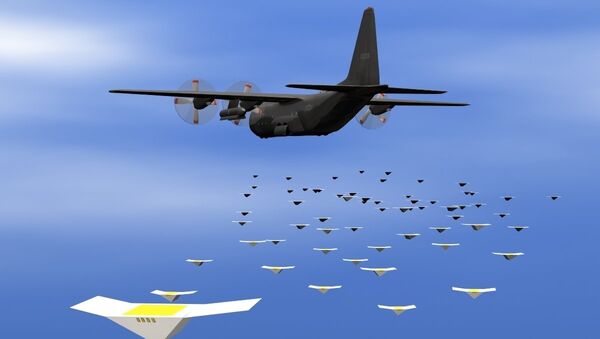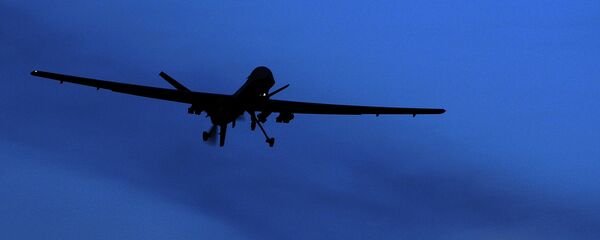The sneaky system deploys from a fighter jet: the jet drops a ‘bomb' while flying slow enough to avoid radar detection, but instead of the munition blowing up, it discards its shell, revealing an unmanned aerial vehicle that can then fly around enemy territory and collect intelligence on the positions of hostile forces, Defense One reported December 5.
Once the UAV leaves the ‘bomb' capsule, it unfurls its 12-foot wings and flies using a wooden propeller. The aircraft can travel up to 10 hours at a speed of 69 knots, or just under 80 miles per hour, which is awfully slow for a US airframe.
But moving slowly is part of the drone's purpose. "When you think about how military [radar] systems are designed, they are designed to shoot down tactical jets. You build into radars gates that take away things like birds," Thompson said.
The US military ultimately wants the aircraft to fly at low enough altitudes and slow enough speeds that it avoids radar detection, but can still sail high enough for small arms fire to be a negligible danger.
Each mini drone would be disposable. It appears the drones of the future don't necessarily have be large, weaponized aircraft like the Reaper in order to be effective in a military setting.
Flight tests for the new system, dubbed Remedy, were first conducted October 26, the report said.
"The issue with unmanned airframe is, for all their advantages, how do you get something this small 400, 700 miles away from an aircraft carrier," Northrop Grumman official John Thompson told reporters in Baltimore this week.
The Office of Naval Research and VX Aerospace have partnered with Northrop to work on the project.
The Pentagon's go-to weapons maker, the Defense Advanced Research Projects Agency (DARPA), announced in 2016 that it had awarded contracts for another drone program, dubbed Gremlin. The program seeks to give aircraft the ability to launch large numbers of cheap, reusable miniature drones from an aircraft and return them to an aircraft mid-flight. While the Remedy drones would deploy from fighter aircraft like the F/A-18 Super Hornet, the military envisions also disbursing Gremlin aircraft from larger aircraft such as bombers or transports.




